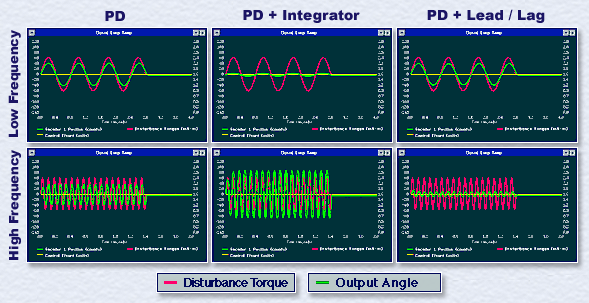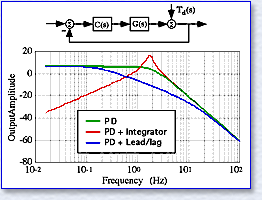| |

With the addition of the integrator, the low frequency disturbance is highly attenuated, but the high frequency one is actually amplified. The lead/lag filter does little to change the low frequency performance but is effective in attenuating the high frequency disturbance. These effects are studied in terms of the open loop gain of each controller. The closed loop transfer function between the disturbance and the output (see Figure 2) is then obtained and is seen to agree well with the experimental results. Thus the student learns through first hand experience that the effectiveness of control regulation depends on the open loop controller gain characteristic and the frequency band of the disturbance itself. |
